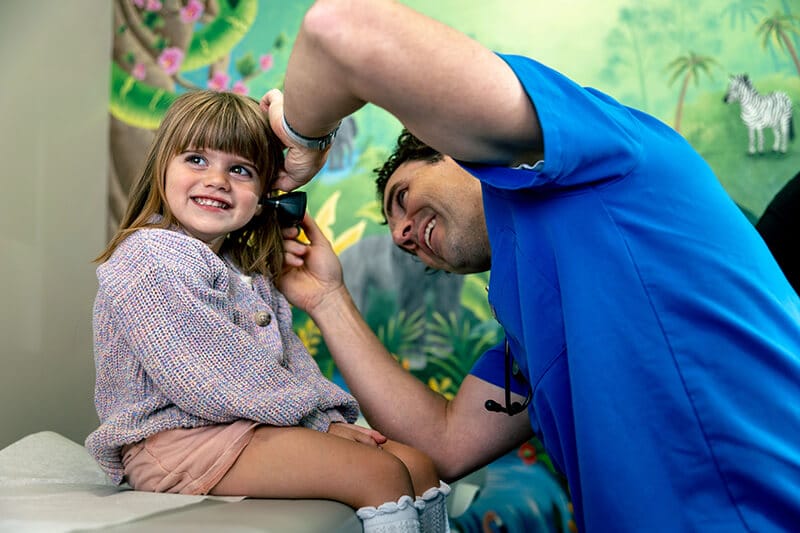Financial literacy and healthy money habits are crucial skills for living in a modern world, but those aren’t lessons often covered in schools. When it comes to ensuring your child has strong financial habits, the first line of defense is at home. Most kids begin building financial habits for better or for worse between the ages of 6 and 12.
While many people learn money lessons through trial and error (emphasis on error), you can help your child learn to be financially savvy by teaching them these key money lessons for kids early on, ensuring they develop responsible financial habits from a young age.
Teaching Kids About Money Management
It’s often said that kids are like sponges, watching and absorbing everything they see, which extends to the spending habits of the adults around them. Whether you’re cautious with spending or cavalier at the cash register, your kiddos will assume that’s the norm.
By contrast, kids who see their parents anxious or even fighting about money will absorb that lesson, too. To set a good example, try to make good financial decisions and have calm, rational discussions about finances. You can also introduce them to games to teach financial literacy, helping them learn about budgeting, saving, and responsible spending in a fun and engaging way.
Teaching Kids About Earning Money
One of the first things children should learn about money is that it’s tied to some work. Decide as a family how your child can earn money, either through an allowance, for good grades or good behavior, in exchange for chores, or through some other means. This is an essential money lesson for teens, as it helps them understand the connection between effort and financial rewards.
In adulthood, people make income decisions by balancing the demands of a particular job with the financial reward and determining whether it’s worth it. Including your child in the decision about how they’ll earn money mirrors the career and income decisions they’ll have to make later in life.
Finally, talk about “surprise money” like bonuses or, more likely, birthday or holiday gifts for children. Discuss how people spend different money in different ways. Your child may be tempted to spend birthday money more frivolously than the money they had to work to earn, which is something you should discuss together.
Teaching Kids About Saving Money
Talk to your kids about making big purchases, emergencies, vacation funds, and other reasons to save money. Consider opening a savings account for your child and discussing the benefits, like security and interest payments.
There are also entirely virtual options for managing your child’s money. Digital savings and checking accounts like Greenlight or Acorns Early allow kids to have a debit card and manage money while parents can deposit allowance, set limits, and track spending. Teaching your child the difference between debit and credit cards and allowing them to manage their money with parental support provides a great learning opportunity.
For younger children, introducing money for preschoolers in a simple way—like using jars for saving, spending, and giving—can help them grasp the basics early. Even a structured money lesson, such as playing a pretend store or sorting coins, can be a great way to introduce financial concepts in an age-appropriate manner.
Teaching Kids About Budgeting and Financial Planning
Explain the importance of making a budget and sticking to it. Have your child separate their income into spending and savings. Make a decision together about what portion of their income should be saved and what can be spent. Consider edge cases as well—will they have to save a portion of any money they might get from birthdays or holidays? That’s something you should discuss in advance. Practice budgeting and spending so your child can experience it in real-time.
- Make a “big” purchase: Make a decision together about something moderately expensive your child would like to buy. Set a savings goal, discuss ways to earn money to meet their goal, and help them work toward it. Check-in regularly to see how your child is advancing toward their goal.
- Include children in meal planning: Make your child responsible for a weekly family meal. Provide a budget and have them plan a meal, complete with a list of ingredients. Take them to the store, have them find the ingredients, and complete the transaction at the register. They might have to make compromises or even choose an alternate meal, and they’ll see how budgeting and spending are related in the real world.
- Give them a budget: Whether it’s a birthday gift or a random shopping trip, giving your child a budget and making them stick to it helps your child learn the value of money, make thoughtful selections, and develop financial skills for the future. This hands-on money management activity for youth can reinforce key financial concepts in an interactive way.
Teaching Kids About Spending and Shopping
Talk to your children about advertising, peer pressure, and impulse buying. Once kids have money of their own, they are bombarded with flashy messages and friends’ comments, pushing them to buy half a dozen things every day, especially if they’re online. Learning to resist those temptations is a significant financial skill. Teach them that purchases should be planned and intentional.
- Encourage your child to consider their requests. Rather than purchasing requested items for them immediately, ask them if it’s something they are willing to buy with their own money. This allows your child to think about whether what they want is important to them or if it’s something they believe will be an easy yes from you. It also provides an opportunity for you to discuss wants versus needs.
- Give your child time before purchasing. If they see something they really want, even if they have their own money, have them wait a day before buying it. Time and distance often tempers desire, and the temptation won’t be as strong the next day.
- Help your child with a financial plan. If your child still wants to make a purchase, suggest making it a savings goal or offering to let them earn money on commission by doing extra chores. Alternatively, you could loan them the money; more on that below.
Teaching Kids About Credit and Borrowing Money
Opportunities to borrow money happen regularly at retail stores, banks, and through the mail the minute your child turns 18. Teach your child about loans and credit cards. Ensure they also understand that borrowed money is almost always paid back with interest. Kids should understand the role of credit scores and how to use credit responsibly. If your child wants to make an impulse purchase or buy something they can’t quite afford, you could offer to loan them the money. Have them wait at least a day and agree on an interest rate and payment plan before returning to get the item. Going through the experience of borrowing money and paying it back can help kids understand the added cost of credit cards and loans in a safe environment. This could also be a great time to introduce a lesson about money, focusing on how debt works and why it’s important to borrow responsibly.
Raising Kids With Financial Literacy
In addition to learning healthy earnings, savings, and spending habits, kids must understand how to keep their financial information safe, especially online. Talk about never giving out private information (birthdate, address, etc.) online and the risks of online purchases. Kids aren’t born with the skills to recognize a scam when they see one. Teach your children about spam emails and texts and the dangers of opening links or providing personal information to someone in those cases.
Keep money visible. If your kid gets paid in cash, have them keep it in a glass jar or a clear bank. If you use a bank account or app, check in regularly to review the numbers. The visual element helps kids see how their money grows or shrinks depending on their choices. Remember to stay involved in your child’s financial education; you’re the best safety net they have.






